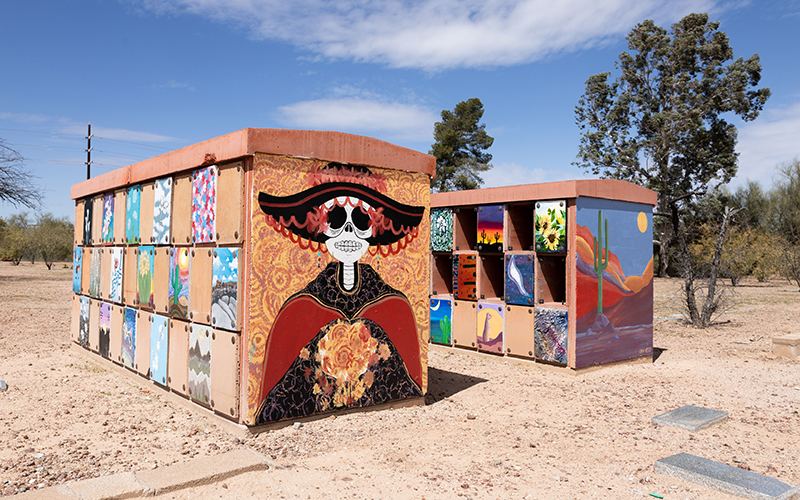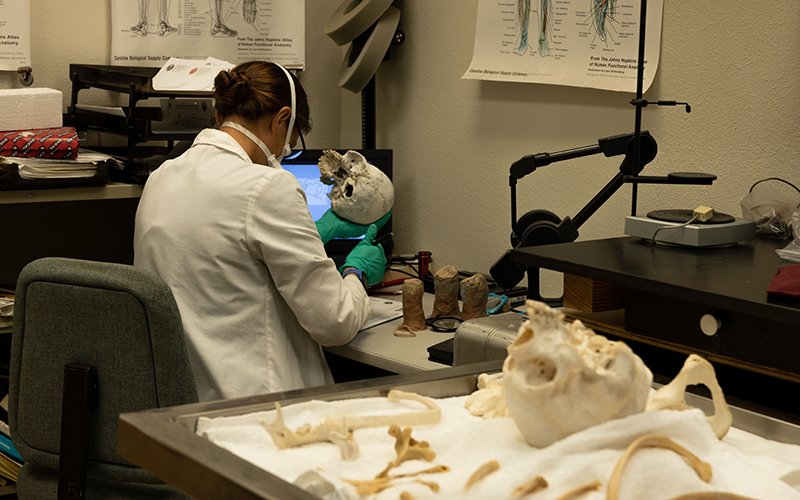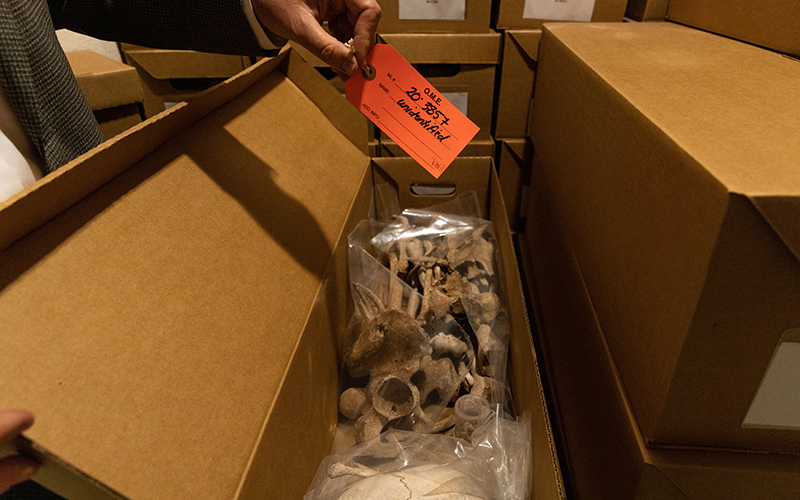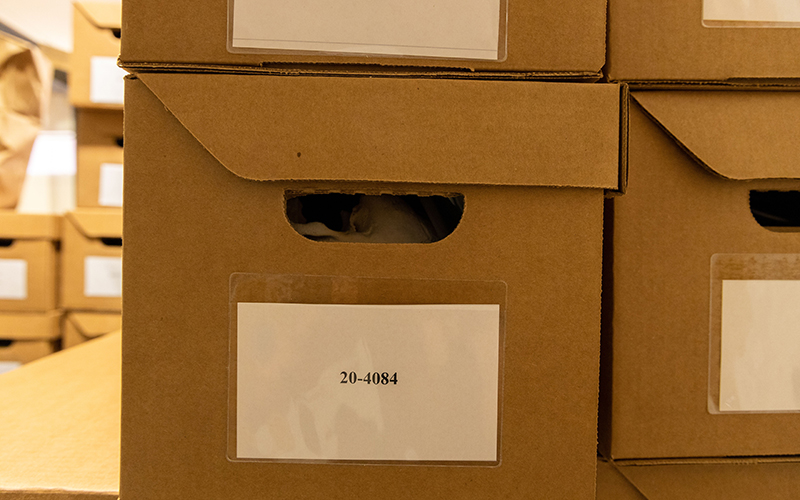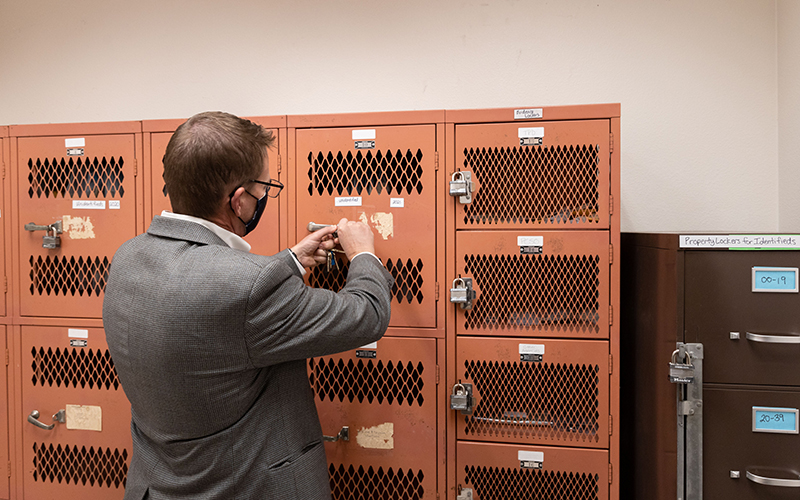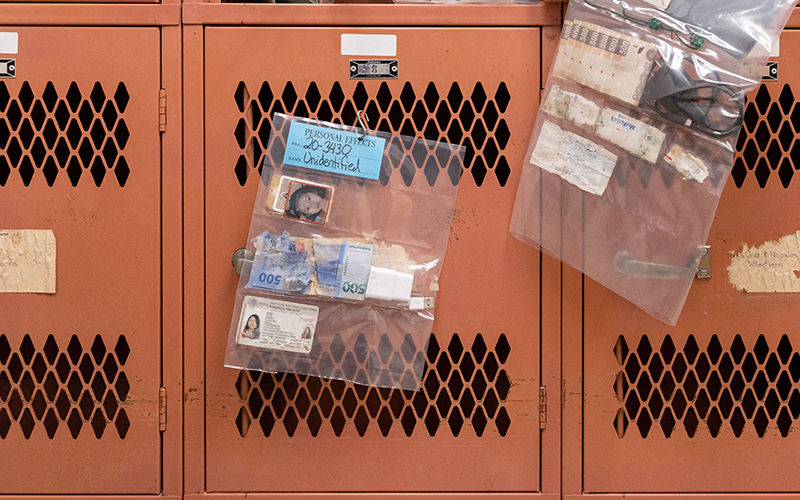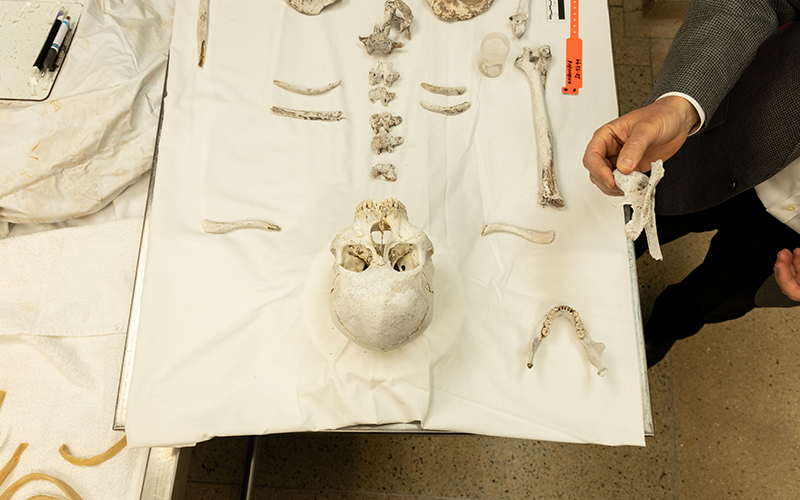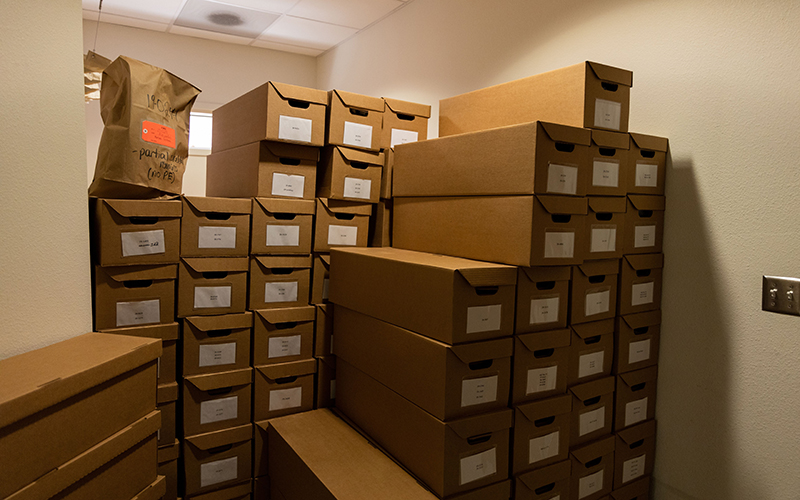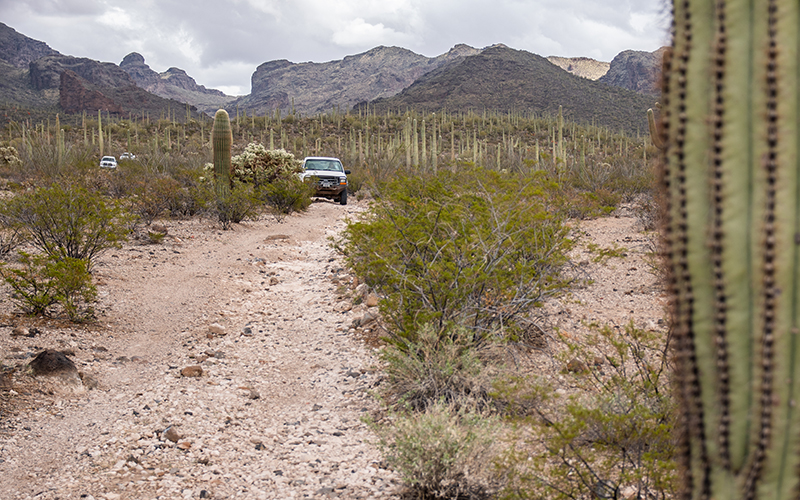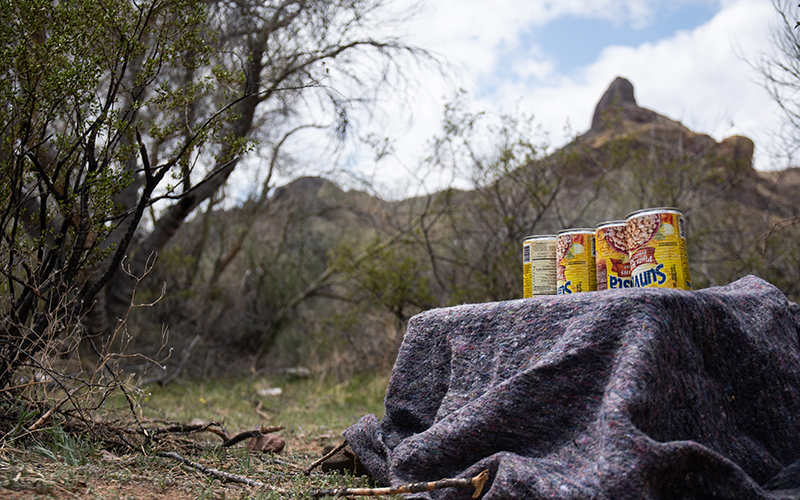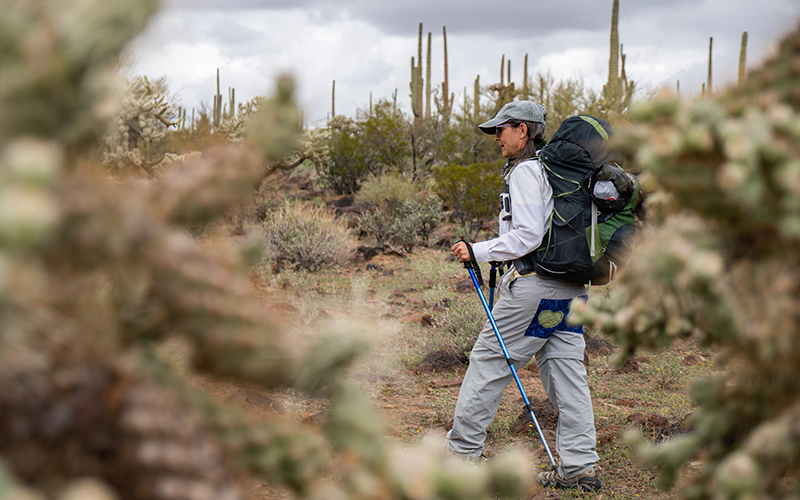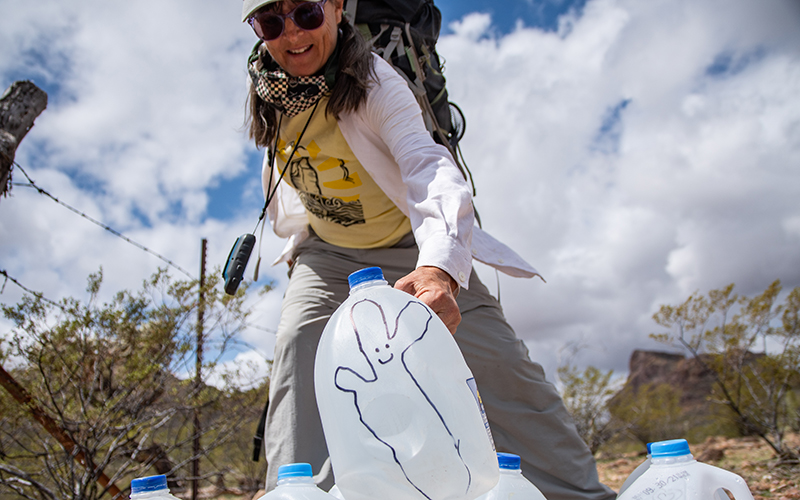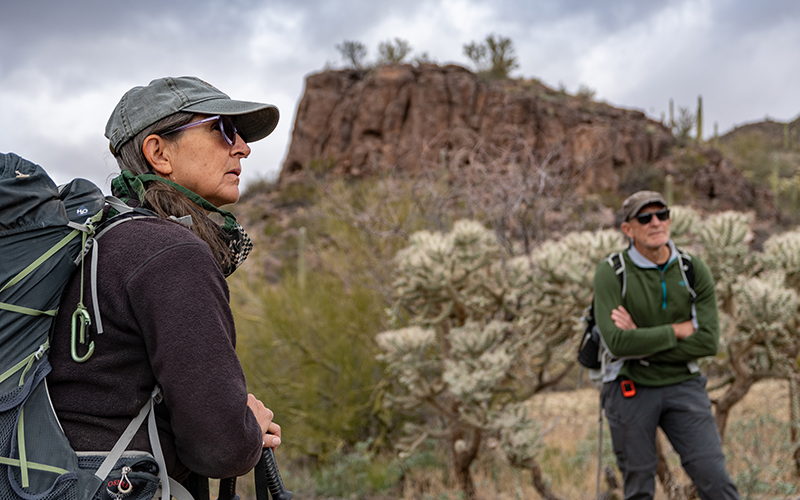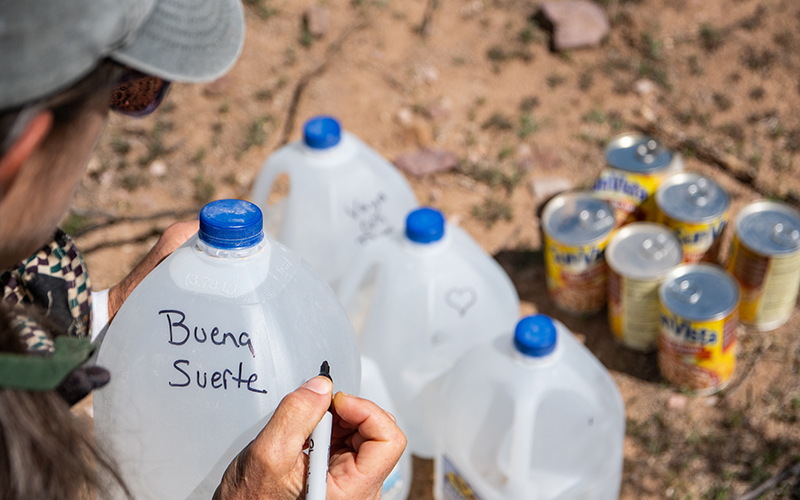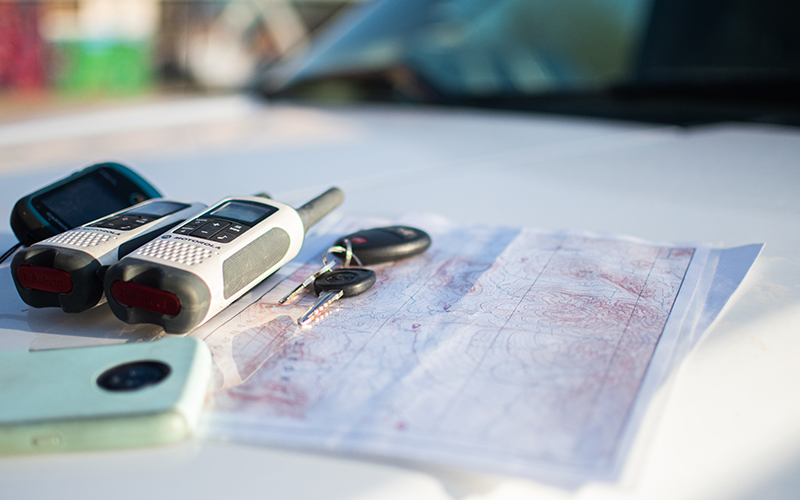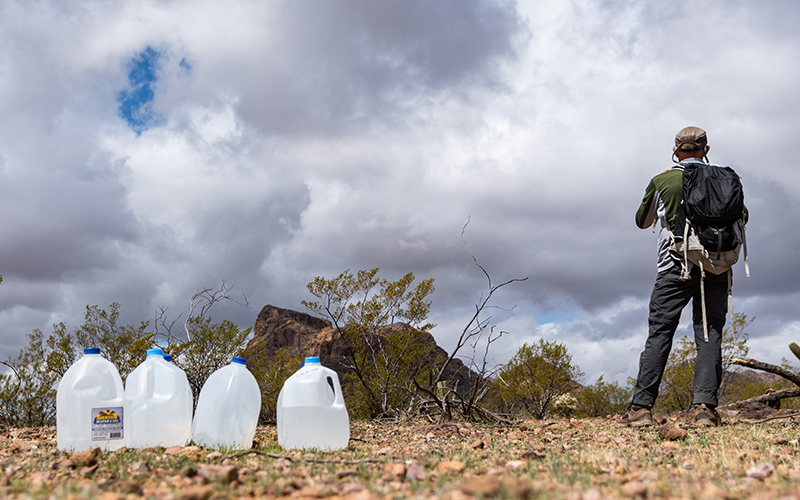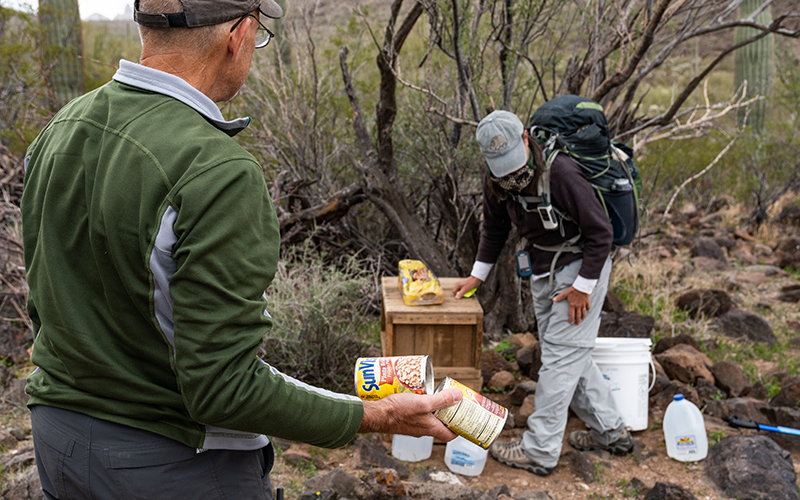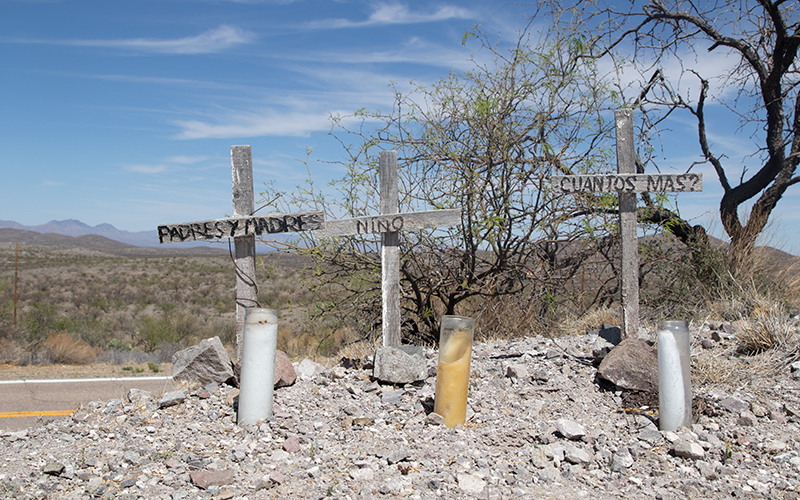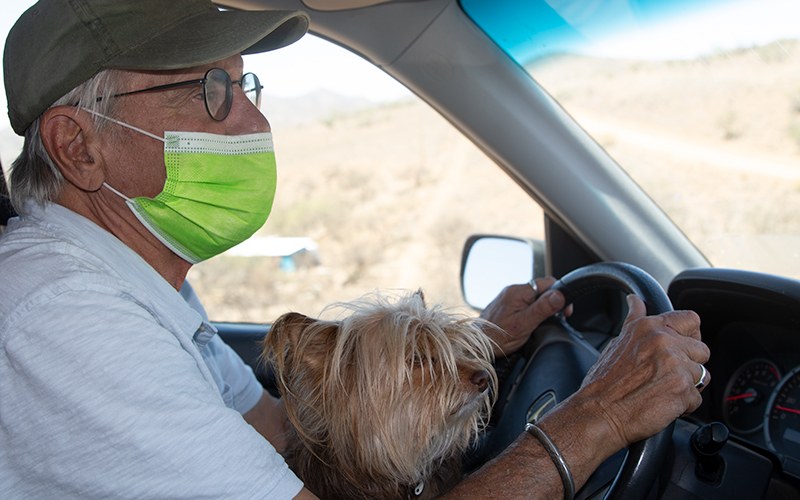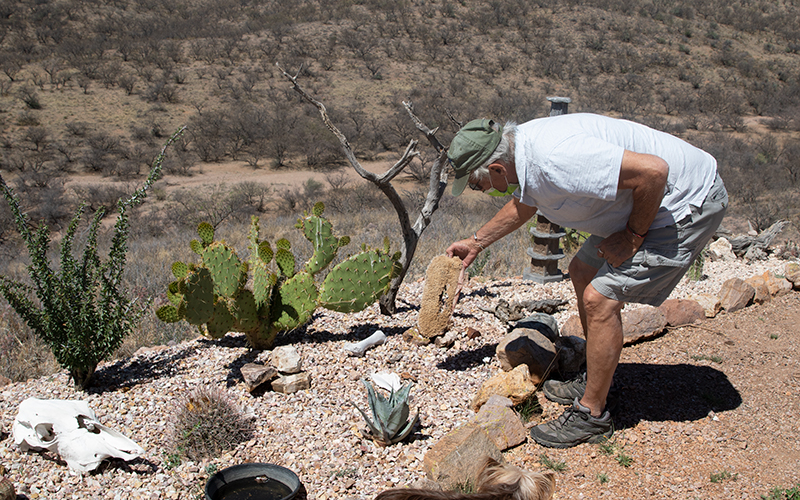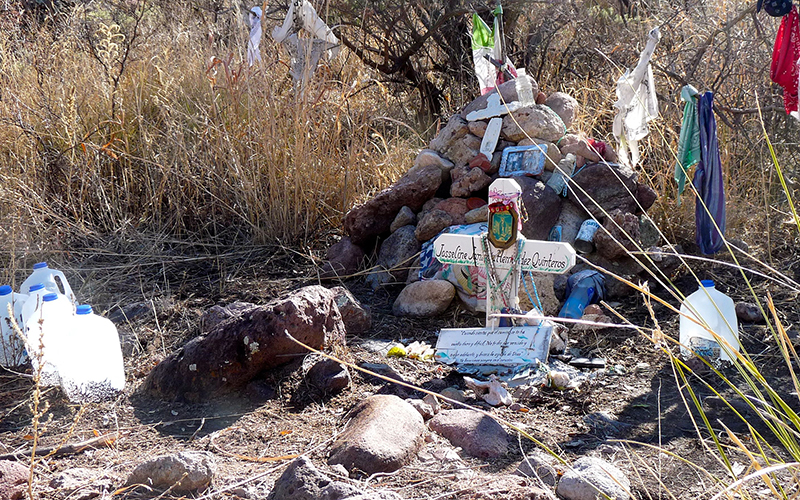AJO – It was a simple message scrawled into a basalt rock lying near empty cans of beans and jugs of water that volunteers had left deep in the Sonoran Desert for undocumented immigrants passing through: “Gracias.”
But to Mikal Jakubal, who, as a volunteer with the Ajo Samaritans, had been making weekly trips into the backcountry to stock water drop locations, the note was affirmation that the group’s efforts were appreciated.
“For the most part, we will never hear from the people who use this,” Jakubal said. “We don’t know what it was like getting to this point. We don’t know what is after this. But you have this one little connection across massively different life experiences: They found some water and you found a thank you note.”
Mark Diekmann, a volunteer with People Helping People in the Border Zone in Arivaca, located 11 miles north of the U.S.-Mexico border, said those moments make his work worthwhile.
“Every time you give somebody water, they appreciate it. Every time you give somebody warm clothes,” Diekmann said. “Every time you give them a warm place to be and they know, for the moment, that they’re going to be OK.”
Two decades ago, when the U.S. Border Patrol began to focus on more populated areas in California and Texas and general enforcement increased across the southern border, migrants began venturing into more remote areas to cross the U.S.-Mexico border undetected. Since then, local humanitarian aid groups in southern Arizona, such as the Ajo Samaritans and People Helping People in Arivaca, have been working with a core mission: to mitigate suffering and death in the harsh desert wilderness of the Arizona borderlands.
Even so, the bodies of 227 undocumented border crossers were found in the Arizona desert in 2020, a record. Dr. Gregory Hess, chief medical examiner with the Pima County Office of the Medical Examiner, attributes the increase to last year’s hot, dry summer.
“When I started here in the late 2000s, I don’t think anybody would have dreamed that we’d still be seeing these types of numbers now,” Hess said.
And absent meaningful efforts to address the factors that drive people to risk their lives crossing miles of unforgiving desert, the problem will continue, Hess and other experts say. It is an issue driven by global factors. Although most of the migrants come from Latin American countries, people from Asia, Africa and the Middle East are represented among those crossing the border.
“You can’t even describe what we are doing as a Band-Aid on a gushing wound,” Jakubal said.
He said a long history of U.S. policies in Latin America have contributed to the reasons migrants are risking their lives to trek for days through harsh terrain in hopes of finding better lives in the U.S.
In other words, Jakubal said, “what’s going on at the border now is like a symptom on top of a symptom on top of a symptom of the deeper problem.”
A shift in policy
Doug Ruopp, a veteran volunteer with the migrant aid group Humane Borders, remembers a time before people started to die at striking rates in the Sonoran Desert. He moved to Tucson from New England in the late 1990s to become a bilingual teacher. Back then, the border crossings he heard about were different.
As a teacher, his students talked about family members from Mexico planning a weekend visit.
“Then one of the kids would say, ‘Oh no, he didn’t come this weekend, they fixed the fence in that spot, so he couldn’t get through,’” Ruopp said.
“That was 20 years ago,” he said. “We hadn’t become a military industrial complex along the border yet.”
Multiple federal immigration policies were implemented in the mid-’90s through a strategy known as Prevention Through Deterrence, which redirected migrants to routes in more remote and dangerous parts of the border by concentrating enforcement resources in urban areas.
With traditional routes disrupted, a 1994 Border Patrol report predicted, migrants would be “forced over more hostile terrain, less suited for crossing and more suited for enforcement.” It described the terrain as one that could place migrants “in mortal danger.”
Operation Hold-the-Line in 1993, a Border Patrol strategy that sent agents and enforcement technology to the border between El Paso, Texas, and Juarez, Mexico, was “an immediate success,” according to Customs and Border Protection’s website. Apprehensions of people who were crossing the border dropped by more than 70% in the El Paso corridor, according to an Office of Inspector General report. The next year, the government enacted a nearly identical policy, Operation Gatekeeper, in San Diego, with similar results. Both were initiated under former President Bill Clinton’s administration.
But border crossings did not stop – they merely shifted. Migrants carved routes through expanses of wilderness where they were exposed to extreme temperatures and dangerous terrain.
Thousands of people have died in the process. The number of deaths is like a major plane crash happening every year in the same area, said Mike Kreyche, who maintains the death mapping initiative for Humane Borders.
“One airplane crash in an area is traumatic, but here it’s happening on a regular basis,” he said.
After decades of this reality, he said, the group maps these deaths to get the public to realize just how many people are dying on the border. Sometimes, he said, “it doesn’t feel like there is an end in sight.”
